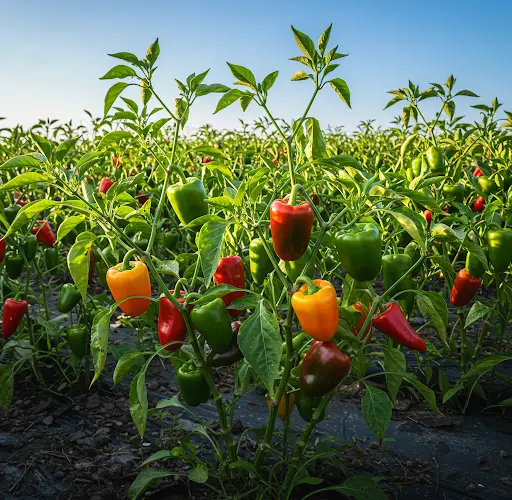How to Overwinter Pepper Plants and Grow Them Year After Year
Many gardeners treat pepper plants—both hot and sweet varieties—as annuals, replacing them each year with new seedlings. However, pepper plants are actually perennials. With the right care, they can survive for several years, providing earlier harvests and saving you the trouble of starting from scratch each season. Overwintering your pepper plants is a simple and effective way to preserve your favorite varieties, extend their lifespan, and enjoy consistent, productive crops year after year.
Here’s a step-by-step guide to help you successfully overwinter your pepper plants.
1. Choose the Best Plants to Save
As the growing season comes to a close, assess your pepper plants and choose the healthiest and most productive ones. Select plants that have shown strong growth, good disease resistance, and produced high yields. These are the best candidates for overwintering.
Before doing anything else, harvest all remaining peppers. This is important because it allows the plant to shift its energy from fruit production to survival. Leaving peppers on the plant during the overwintering process can drain valuable resources and slow down recovery.
2. Prune the Plant Back
This step is often the most challenging for gardeners because it involves cutting back a large portion of the plant. However, it’s a critical step for success.
Using clean, sharp pruning shears, remove about 60–70% of the plant’s top growth. Focus on removing any weak or leggy branches, and trim back each remaining stem to leave only a few strong, healthy branches. This drastic pruning helps the plant conserve energy and recover more easily during the winter months.
Although it may seem harsh, this pruning will actually encourage stronger regrowth when the plant is reintroduced to outdoor conditions in the spring.
3. Carefully Dig Up the Plant
Once the plant is pruned, it’s time to dig it up and transfer it into a container. Be very gentle during this process to avoid damaging the root system. Use a spade or garden fork to dig around the plant, keeping a generous distance from the base to preserve the root ball.
If the roots are disturbed too much, the plant may go into shock, which can weaken or even kill it. The goal is to keep as much of the root system intact as possible to ease the transition.
4. Transplant into a Container
After removing the plant from the ground, transplant it into a large container that provides enough room for the roots to grow. Fill the container with fresh potting soil or compost to provide a nutrient-rich environment for the plant’s recovery.
At this stage, it’s helpful to add a slow-release fertilizer like bone meal to the soil. Bone meal is high in phosphorus, which supports healthy root development—an essential factor for successful overwintering. It will continue to feed the plant gradually over time, reducing the need for frequent fertilization during the cooler months.
Water the plant thoroughly after transplanting to help it settle into its new environment.
5. Move the Plant Indoors or Into a Greenhouse
As temperatures begin to drop, it’s time to relocate your pepper plant to a more protected space. If you live in a region where winters are mild, the container can be left outside during the day and brought in at night. However, once nighttime temperatures consistently fall below 10°C (50°F), move the plant into a greenhouse, sunroom, or any bright, frost-free indoor area.
Ensure the plant receives adequate light—ideally 6 to 8 hours of sunlight or artificial grow light daily. Water sparingly during the winter months, just enough to keep the soil slightly moist but never soggy. The plant’s growth will slow down, but it will continue to survive in a semi-dormant state.
6. Reintroduce the Plant in Spring
As the weather warms up and the danger of frost passes, your overwintered pepper plant will begin to show signs of new growth. This is the signal that it’s time to begin acclimating the plant to outdoor conditions again.
Gradually reintroduce the plant to the outdoors by setting it outside for a few hours each day, increasing the duration over a week or two. This hardening-off period helps prevent transplant shock. Once the plant is fully acclimated, you can either continue growing it in the container or transplant it back into your garden bed.
Because the plant is already established and has a developed root system, it will resume growth much faster than a new seedling. You’ll be rewarded with earlier blooms and fruits, often weeks ahead of plants started from seed.
Final Thoughts
Overwintering pepper plants is a practical and rewarding technique that extends the life of your garden favorites while saving time and resources. With just a bit of preparation and care, you can keep your plants thriving for years and enjoy consistent, early harvests with minimal effort. By pruning, transplanting, and protecting them through the winter, you’ll gain a valuable head start on the next growing season.



